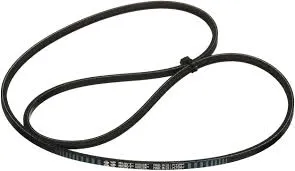- Arabic
- French
- Russian
- Spanish
- Portuguese
- Turkish
- Armenian
- English
- Albanian
- Amharic
- Azerbaijani
- Basque
- Belarusian
- Bengali
- Bosnian
- Bulgarian
- Catalan
- Cebuano
- Corsican
- Croatian
- Czech
- Danish
- Dutch
- Afrikaans
- Esperanto
- Estonian
- Finnish
- Frisian
- Galician
- Georgian
- German
- Greek
- Gujarati
- Haitian Creole
- hausa
- hawaiian
- Hebrew
- Hindi
- Miao
- Hungarian
- Icelandic
- igbo
- Indonesian
- irish
- Italian
- Japanese
- Javanese
- Kannada
- kazakh
- Khmer
- Rwandese
- Korean
- Kurdish
- Kyrgyz
- Lao
- Latin
- Latvian
- Lithuanian
- Luxembourgish
- Macedonian
- Malgashi
- Malay
- Malayalam
- Maltese
- Maori
- Marathi
- Mongolian
- Myanmar
- Nepali
- Norwegian
- Norwegian
- Occitan
- Pashto
- Persian
- Polish
- Punjabi
- Romanian
- Samoan
- Scottish Gaelic
- Serbian
- Sesotho
- Shona
- Sindhi
- Sinhala
- Slovak
- Slovenian
- Somali
- Sundanese
- Swahili
- Swedish
- Tagalog
- Tajik
- Tamil
- Tatar
- Telugu
- Thai
- Turkmen
- Ukrainian
- Urdu
- Uighur
- Uzbek
- Vietnamese
- Welsh
- Bantu
- Yiddish
- Yoruba
- Zulu
ડીસેમ્બર . 12, 2024 15:40 Back to list
classic v belts
Classic V Belts An Essential Component in Mechanical Systems
In the realm of mechanical systems, the significance of power transmission components cannot be overstated. Among these components, classic V belts stand out as indispensable elements in various applications, from automotive to industrial machinery. Their unique design and functionality have earned them a place in the hearts of engineers and technicians alike.
The Anatomy of Classic V Belts
Classic V belts are characterized by their trapezoidal cross-section, which allows them to fit snugly into corresponding grooves in pulleys. This shape maximizes the contact area between the belt and the pulley, ensuring efficient power transmission with minimal slippage. Typically made from a mixture of rubber and fabric, these belts are engineered to withstand considerable tension and wear, making them suitable for various applications.
The common sizes of classic V belts include A, B, C, D, and E sections, each corresponding to different widths and thicknesses. This standardization allows for interchangeable use in many machinery designs, simplifying repairs and replacements. The longevity and durability of V belts can be attributed to their enhancing features, such as anti-static properties, oil resistance, and temperature fluctuations.
Applications Across Industries
The versatility of classic V belts is evident across numerous industries. In the automotive sector, they are predominantly used for transferring power from the engine to various components, such as the alternator, water pump, and air conditioning compressor. A failure in any of these belts could lead to significant operational interruptions, highlighting the importance of regular maintenance.
In industrial settings, classic V belts are commonly found in conveyor systems and machinery like lathes, milling machines, and compressors. Their ability to transmit power smoothly and quietly makes them ideal for heavy-duty applications where efficiency is paramount. Additionally, they are used in agricultural equipment, such as tractors and harvesters, where the ability to handle varying loads is critical.
Advantages of Classic V Belts
classic v belts

One of the most significant advantages of classic V belts is their efficiency. Due to their design, they provide a high level of grip, reducing slippage and ensuring that power is effectively transmitted from one component to another. This efficiency translates into lower energy consumption, which is a critical consideration in both industrial and automotive applications.
Moreover, classic V belts require minimal maintenance compared to other power transmission systems. Their resilience to wear and tear means they can operate for extended periods without needing frequent adjustments or replacements. However, regular inspections are still necessary to check for signs of fraying or cracks, which could indicate the need for replacement.
Another notable advantage is their cost-effectiveness. Classic V belts are relatively inexpensive compared to other types of belts and chains, making them an attractive option for budget-conscious projects. Their widespread availability means that spare parts are easily sourced, minimizing downtime in case of failures.
Challenges and Limitations
Despite their numerous benefits, classic V belts are not without challenges. One of the primary limitations is their susceptibility to stretching over time, which can lead to decreased performance. Additionally, they may not be suitable for high-speed applications, as they can experience vibration and noise at increased velocities.
Environmental factors also play a critical role in the longevity of classic V belts. Exposure to extreme temperatures or chemicals can degrade the belt material, leading to premature failure. Therefore, when selecting V belts for specific applications, it is essential to consider the operating conditions to ensure optimal performance.
Conclusion
In summary, classic V belts are a critical component in numerous applications, offering efficiency, durability, and cost-effectiveness. Their trapezoidal design, coupled with their ability to transmit power smoothly, makes them a preferred choice for various industries. However, careful consideration of their limitations is essential for ensuring longevity and optimal performance. As technology advances, the classic V belt continues to evolve, maintaining its status as a fundamental element in power transmission systems.
-
Korean Auto Parts Timing Belt 24312-37500 For Hyundai/Kia
NewsMar.07,2025
-
7PK2300 90916-T2024 RIBBED BELT POLY V BELT PK BELT
NewsMar.07,2025
-
Chinese Auto Belt Factory 310-2M-22 For BMW/Mercedes-Benz
NewsMar.07,2025
-
Chinese Auto Belt Factory 310-2M-22 For BMW/Mercedes-Benz
NewsMar.07,2025
-
90916-02660 PK Belt 6PK1680 For Toyota
NewsMar.07,2025
-
drive belt serpentine belt
NewsMar.07,2025

